Handling Fruits the Japanese Way
Published: February 1, 2018
Pay a visit to any supermarket in Japan and take a look at the fruit on display. You will find that some fruit is carefully arranged, and in some cases they are individually wrapped; but if you want to really see how to handle fruit the “Japanese way”, then you should make your way to Sunamachi Ginza Shoten-gai (Shopping Street), with its amazing wire-strung skyline…
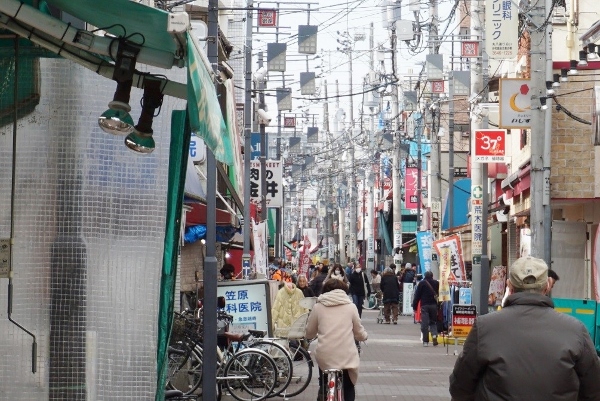
…and drop in to Kudamono Iguchi (Iguchi Fruits).
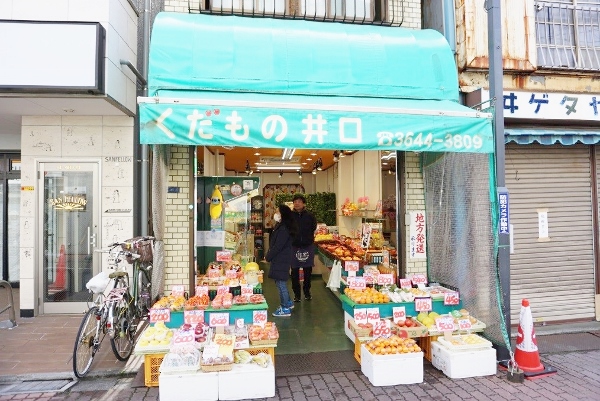
Kudamono Iguchi opened in 1951 and is now into the Iguchi family’s 3rd generation. The antithesis of the “pile them high and sell them cheap” fruiterers, the present owners, Mr. Moriyasu Iguchi and his wife Junko, specialise in stocking their shelves with carefully selected and precisely-wrapped fruit to appeal to the Japanese eye and palate.
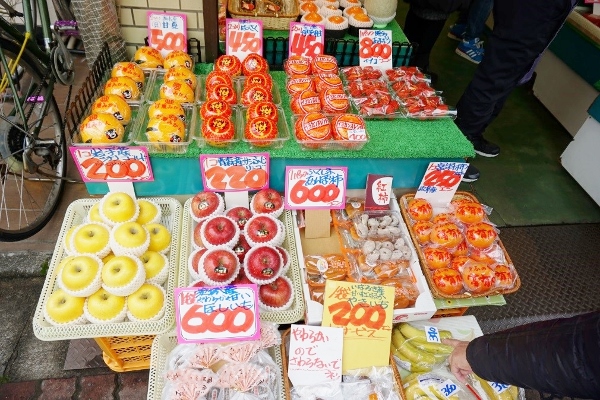
The fruit is chosen for its perfection in shape, texture and taste, and in certain cases, its rarity or novelty value. Mr. Iguchi acknowledged that the prices of products on sale in his store are more expensive than those sold in supermarkets or fruit and vegetable shops, but shoppers come to Kudamono Iguchi because it is local and they know they can trust the quality of the fruit. The shop sells only fruit; I did notice some beautiful large red tomatoes on sale, but it turns out that while many cooks class the tomato as a vegetable, botanically speaking it is definitely a fruit (I checked it up).
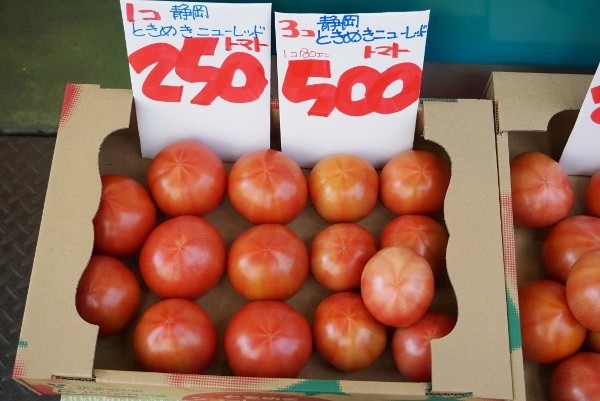
The produce on sale at Kudamono Iguchi changes with the passing of the seasons. At the moment we are into the mikan (mandarin or satsuma orange) season. But don’t be fooled into thinking that a mikan is a mikan is a mikan. As Mr. Iguchi pointed out, the season starts in November with several types of mikan from Ehime prefecture. These are followed in stages by mikan from Shizuoka, Aoshima, and other areas; all with their own distinct tastes and juiciness.
Mr. Iguchi gave me an Aoshima mikan to compare against a Kagawa prefecture “fukurogake wase mikan”. The latter comes with its stem and leaves still attached and lovingly wrapped in a paper bag. It is smaller than the Aoshima mikan, its skin is thinner, it is juicier, and it definitely tastes different from its larger cousin.
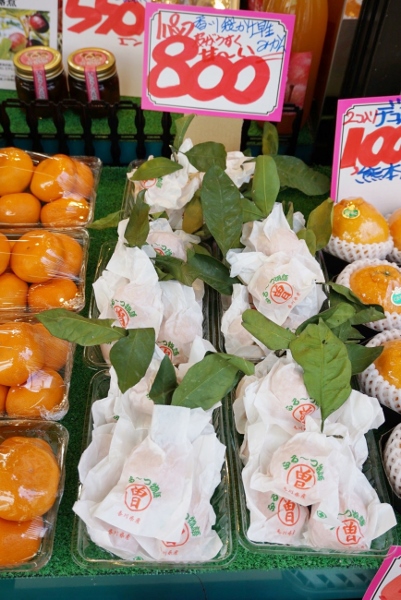
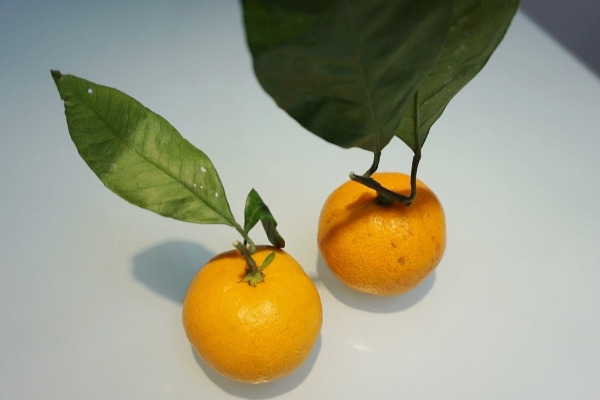
Then there are the various other citrus fruit on display, some of which I had never come across before. Whilst there were the ubiquitous Florida grapefruit, what caught my eye were the amanatsu mikan, buntan, dekopon and hassaku – all untranslatable names and all individually wrapped and carefully arranged on display.
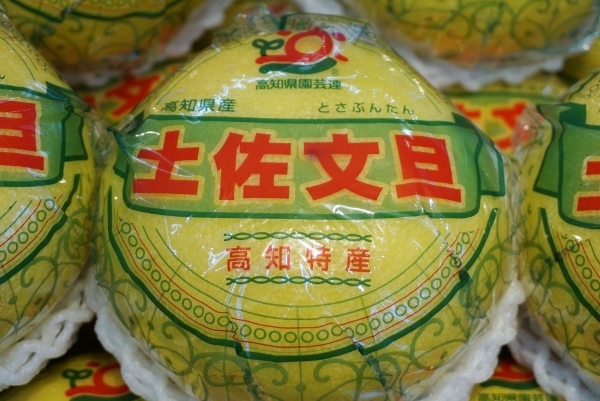
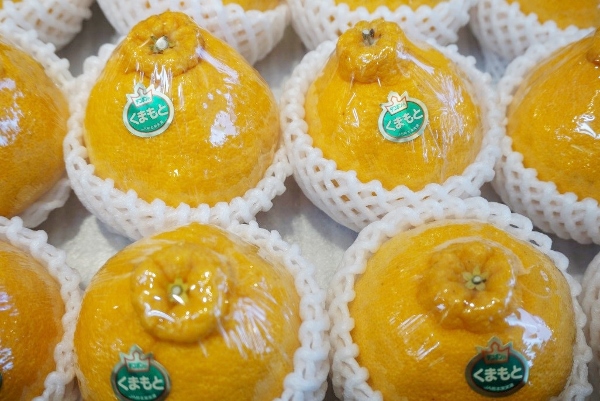
When I asked who wrapped the fruit, Mr. Iguchi indicated a wrapping machine which sat on a nearby stand.
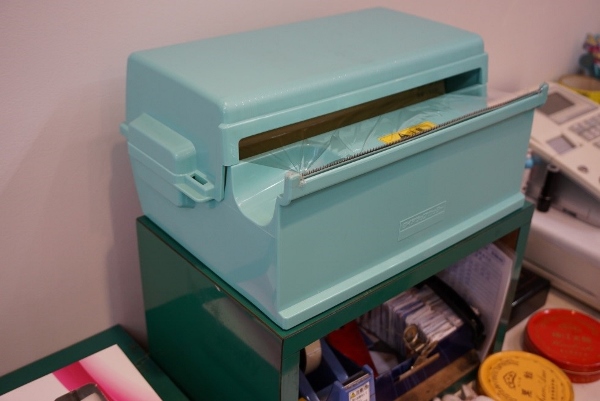
Whilst some of the wrapping is delivered in the boxes along with the fruit, the actual wrapping takes place in the shop, where each item is individually selected and wrapped by the Iguchis to protect it from bruising, before being placed on display. What you see on the shelves is quality, not quantity.
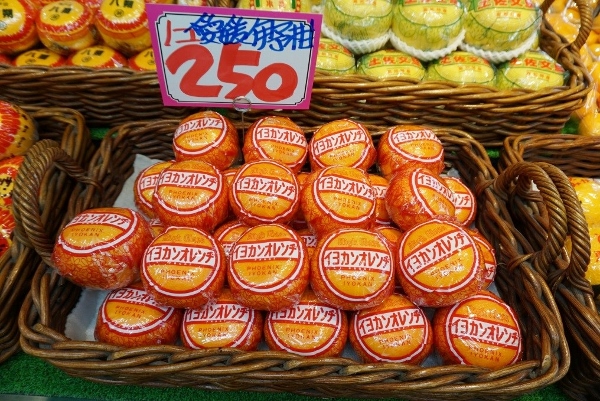
Mr. Iguchi then proudly showed me a banpeiyu from Kumamoto prefecture. As well as eating the innards, families use the skin for making sweets and jam, because of its sweet aroma. The banpeiyu is recorded in the Guinness Book of Records as the largest of the citrus fruits, and there were three lined up for sale, each the size of a bowling ball.
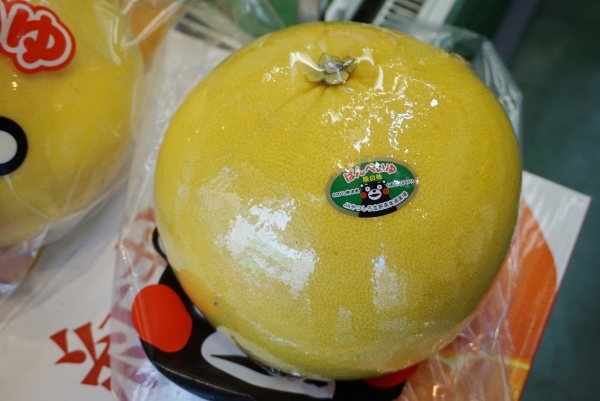
And if you fancy a high-quality melon even though it is now winter, Mr. and Mrs. Iguchi stock beautifully marbled musk melons, grown in hot houses all year round. These cost 5,500 yen, but are almost half the price of those sold in department stores.

I came away from Kudamono Iguchi marvelling at the care and attention which each item of fruit receives before it is placed on the shop’s shelves, to sit waiting to catch the attention of passing shoppers.

Story and Photos by Jeremy Hutchinson


